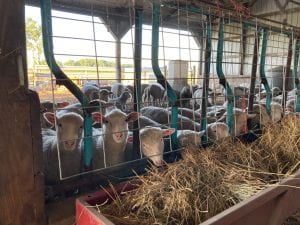I couldn’t detect Vaughan Woodruff’s Maine accent–perhaps because I grew up in Maine myself or perhaps because of the highway noises crackling over the phone. But he speaks of central Maine with such fondness that there’s little doubt where his heart lies.
Vaughan was kind enough to squeeze in our interview during a Friday evening drive from a solar installation site in Brunswick back to his home in Pittsfield, ME.
Solar energy has been booming in Maine for the past few years. Since 2019, installation of solar generation in Maine has grown tenfold per year, and since 2015, the cost of installation has fallen 11%.
Vaughan has been deeply committed to making sure this boom is benefiting more than just wealthy coastal areas. In addition to starting InSource Renewables in 2008, Vaughan has become one of the Maine solar industry’s foremost social justice champions, focusing his business on serving rural and economically struggling communities and dedicating valuable time to training the next generation of Maine energy workers.
Vaughan grew up in Pittsfield—an old mill town in central Maine—and identifies with its struggles. “If I’m going to raise my kids here, there better be a town for them to be connected with,” Vaughan said of his decision to base his company locally. Maine’s aging population, lack of solar experts, and small workforce make the challenges of running a solar company in a sparsely populated and poorer part of Maine especially acute.
Investing in community has been a central part of Vaughan’s business philosophy. In 2016, InSource became a worker-owned cooperative and was awarded B Corp certification, a designation that shows the company is focused on balancing “purpose and profit.” To Vaughan, this means empowering his employees and involving them in the decision-making process.
“I’m a very wary capitalist,” he said. “Solar companies make their money by selling the hours of their laborers. Responsibility and reward need to go together.”
In early 2021, Vaughan decided to merge his company with ReVision Energy because of mounting challenges posed by the pandemic. But he made sure his new partner was compatible with his employees-first model.
There are many renewable energy companies in Maine and when I asked about competition, Vaughan laughed. “Solar competes for customers day in and day out,” he said, but “in order for our industry to grow the pie, it’s taken tremendous collaboration.”
By “collaboration” he means the unending hours volunteering on various committees to push for better solar policy. He said he spends twenty to thirty percent of his time working on policy issues–a nearly unmanageable burden for a small business owner and still a significant stretch now that he works for ReVision.
Paid positions would exist for policy work in a more mature market–one with bigger businesses and greater depth of trained employees. Instead, the day-to-day running of companies, educating communities about why solar is important, and fighting for policies fall mainly on the shoulders of local solar entrepreneurs like Vaughan. Fortunately, other organizations including the Environmental Policy Coalition often work with solar leaders on policy and education issues. But Vaughan feels they only provide limited support and can hold conflicting interests.
And there is a lot of work to be done to improve the policy landscape for solar in Maine. The two biggest tasks on Maine’s renewable energy front are creating more consumer-owned utilities and updating the grid.
Consumer-owned utilities would help take down CMP, Maine’s biggest energy provider which Vaughan describes as “imperialistic,” and provide lower rates, higher reliability, and a faster shift to renewables for Mainers. “There’s a lot of momentum right now to shift from utility-owned to consumer-owned utilities,” Vaughan said. Instead of benefiting shareholders, utilities would focus on benefiting consumers.
Updating the grid could prove harder. “What we need to figure out as a society is grid planning,” he said. To successfully transition to a renewable-based system we need a grid that can handle the two-way traffic of small- and large-scale solar and wind projects. Private industry currently carries the burden of updating the grid, but government on both the state and federal level needs to step up its involvement to hasten the process. More progressive states, Vaughan explained, are already successfully organizing this shift on the state level.
Near the end of our interview I expressed gratitude for his optimism and the tireless energy he pours into his work. But he wanted to end our conversation on a different note.
“I have deep pessimism in the world that we’re leaving for the next generation,” he explained. “If you engage in this work there’s a lot of hardship. But the work must go on. We have no choice.”

Solar Project in Pittsfield, Maine




























